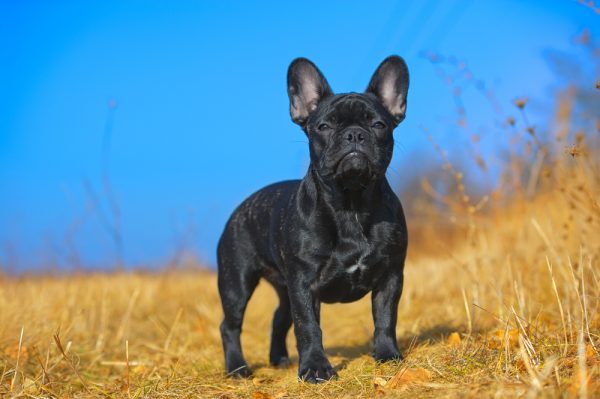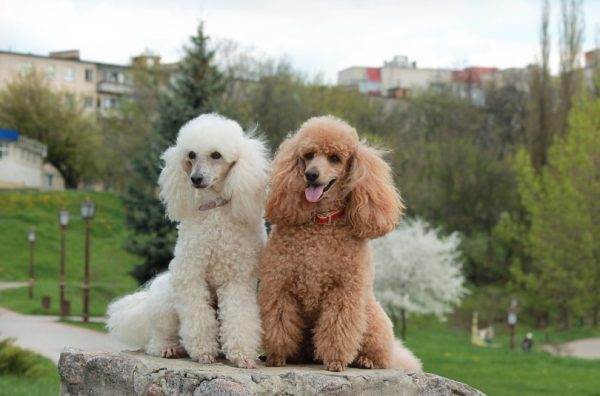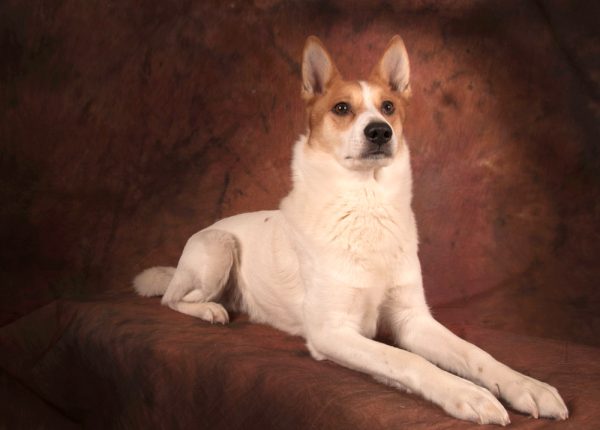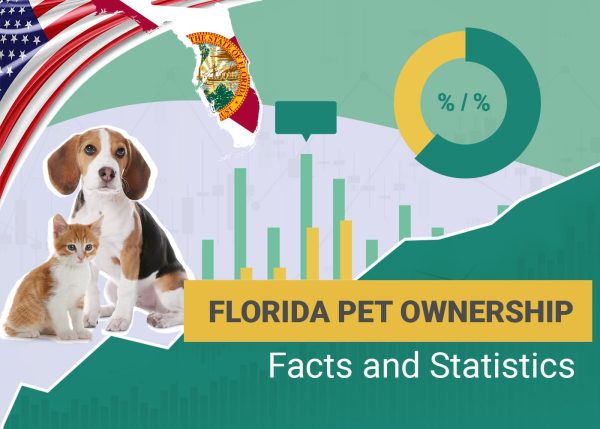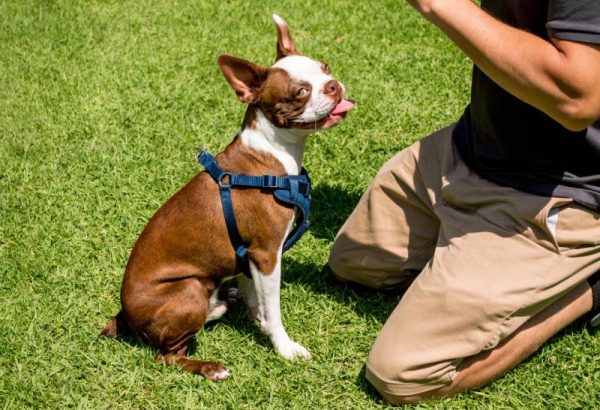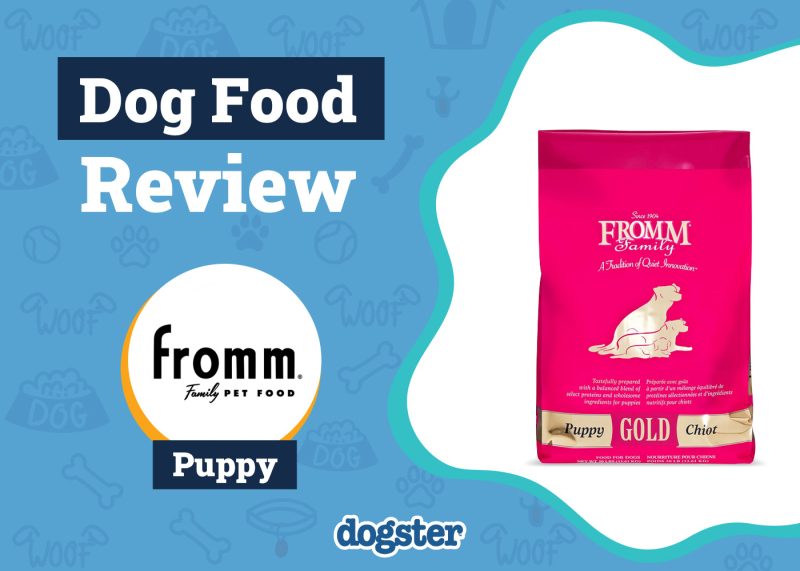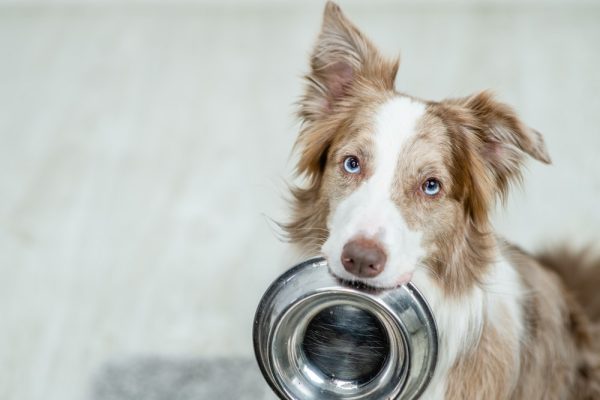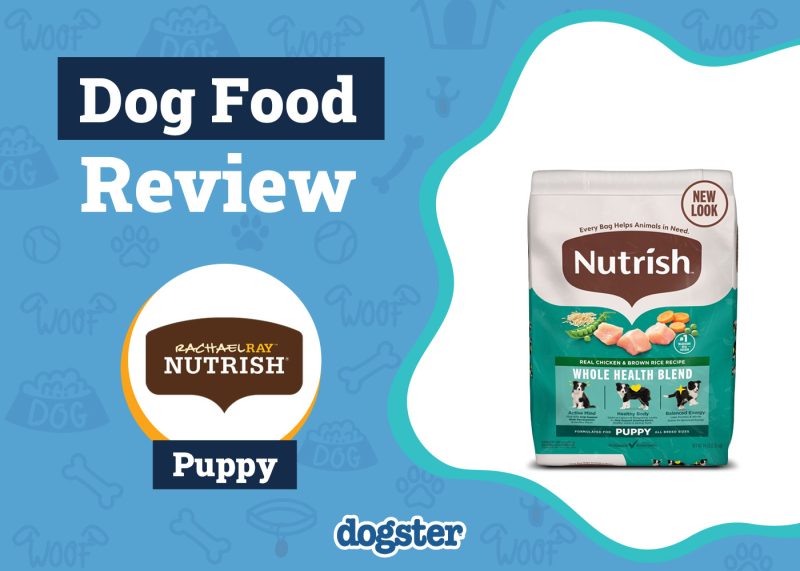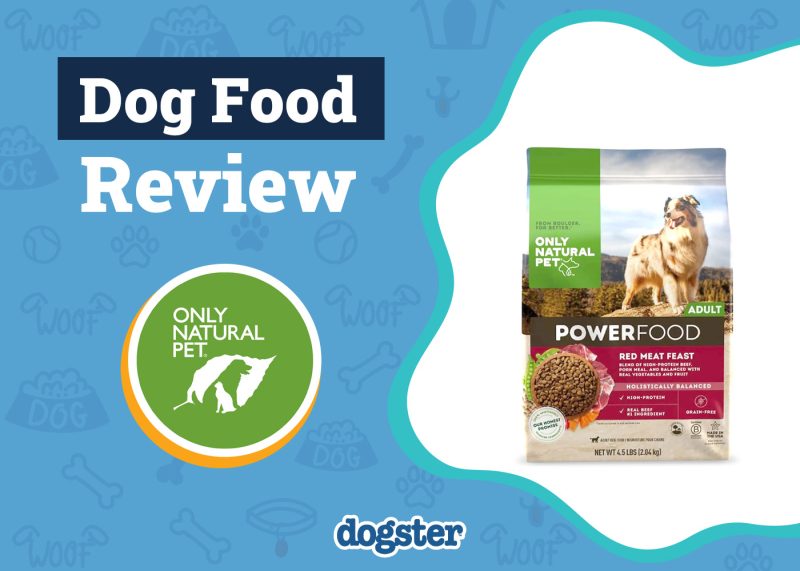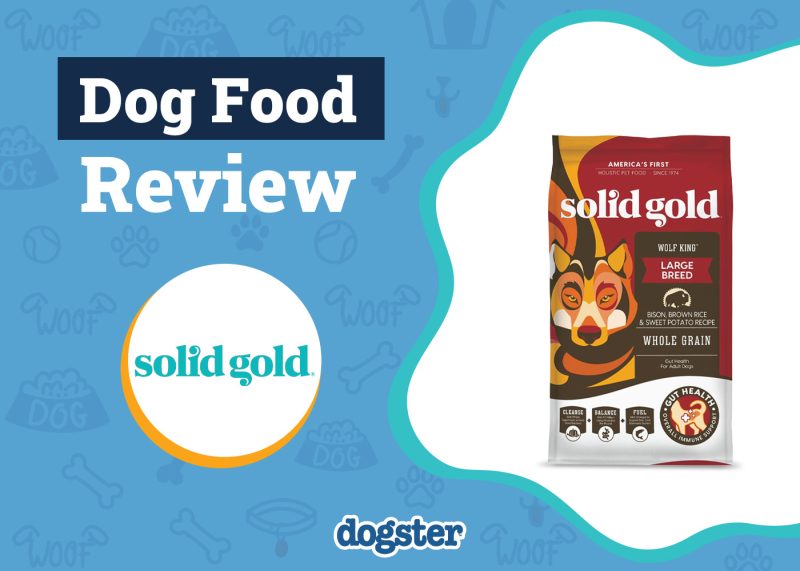In this article
View 8 More +The Norwich Terrier is a little-known Terrier with a larger-than-life personality, and they come in your standard Terrier colors, like wheaten. Norwich Terriers are family-oriented and loyal but have an independent, inquisitive spirit that makes them the ideal solo or family companion dog. If you want to learn more about this scrappy little fuzzball, you’re in the right place! We’ll examine these underrepresented Terriers and what makes them tick below.
Breed Overview
Height:
9–10 inches
Weight:
10–12 pounds
Lifespan:
12–14 years
Colors:
Wheaten, grizzle, black and tan, red
Suitable for:
Active families with or without children, moderately active singles, or seniors
Temperament:
Sweet, loyal, playful, bright
The Norwich Terrier is one of the smallest working Terrier breeds, developed to hunt small game and vermin for the working class in 19th-century England. Coming in a modest palette of standard colors like wheaten and red grizzle, the Norwich is thought to trace their ancestry back to small red Irish Terriers that lived in the 18th century. Today, their small litter sizes make them a rarity compared to other, more popular Terriers.
Norwich Terrier Characteristics

Norwich Terrier Breed Puppies
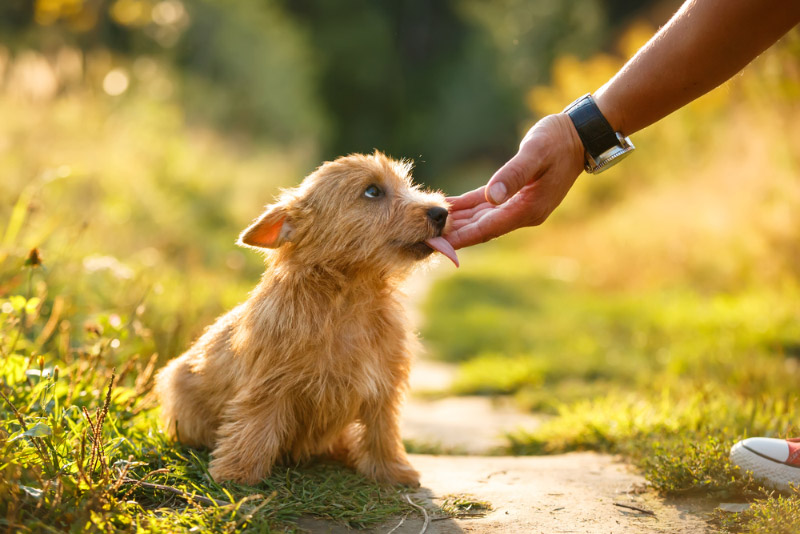
Norwich Terriers are rare, and you have a lot of work ahead if you plan to find one. The AKC marketplace is a fantastic resource that can help connect you with qualified and accredited breeders, but you may also have luck searching for Norwich Terrier enthusiast groups on social media to find breeders. Yet another vital resource is the Norwich Terrier Club of America, which provides information on reputable breeders.
It’s crucial that you do your homework on the breeder before committing to a puppy; we know they’re adorable, but we promise it’s worth the extra work to get a healthy Norwich Terrier.

Temperament & Intelligence of the Norwich Terrier 🧠
Norwich Terriers are joyful, hyperactive, and highly curious dogs that thrive on human contact and love to play the clown for laughs. They have a brash, bold courage at odds with their diminutive size—the textbook definition of a “big dog in a small body.” Norwich Terriers are spirited, playful, and just as scrappy as any other Terrier. They’re very social and emotional dogs that become attuned with their owners.
The Norwich is witty, intelligent, and eager to please for love and the right treats. They live in the moment and have a hyperactive joyfulness that can infect even the most dour Scrooge. They grow very close to their family and don’t care for strangers, which they show with their best big dog bark. At home or out and about, the Norwich Terrier is happiest by your side.
Are These Dogs Good for Families? 🏡
Yes, Norwich Terriers are cheery, sweet dogs that make spectacular family pets if you teach them the proper boundaries early to temper their hyperactive side. They might be a little small for young kids, as, like kids, the Norwich doesn’t know their size and can play too rough sometimes. Some dogs are more patient and tolerant than others. They can be overly hyperactive sometimes and need your help to expel their energy in an appropriate manner.
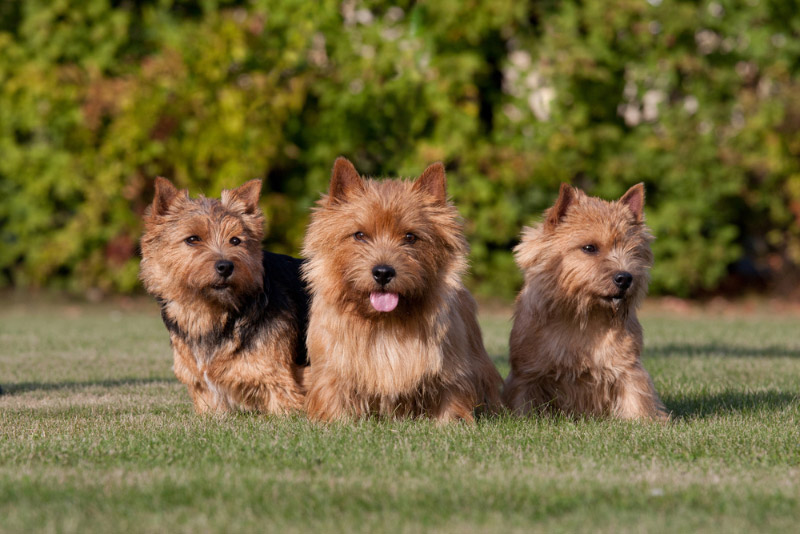
Does This Breed Get Along With Other Pets? 🐶 😽
Yes, Norwich Terriers usually get along well with other small dogs if they’re well-socialized as puppies. They can be a little annoying to big dogs, but they can get along if the large pups tolerate the Norwich’s hyper personality. They can even learn to co-exist peacefully with cats! Small prey animals like bunnies or guinea pigs aren’t a good idea because the Norwich has a strong prey drive toward small, flighty critters.

Things to Know When Owning a Norwich Terrier
Food & Diet Requirements 🦴
Norwich Terriers may not eat much compared to a larger dog, but they still need the best food you can give them. Aim for a small-breed kibble with 25% to 32% protein for a Norwich puppy, settling at a moderate 18% to 24% once they reach adulthood. Protein helps fuel their growing muscles and maintains them as they grow. Carbs, healthy fats, vitamins, and trace minerals round out the standard kibble to give your Norwich Terrier everything they need for a balanced diet.
Norwich Terriers also enjoy meaty treats, veggies, and fruit like any other pup. Liver, beef, duck, lamb, chicken, and eggs are all great sources of protein and fat. You can serve small pieces of unseasoned, cooked meat as treats, but try to use leaner cuts; they don’t need much fat in their diet. However, treats should only make up 5% to 10% of their diet.
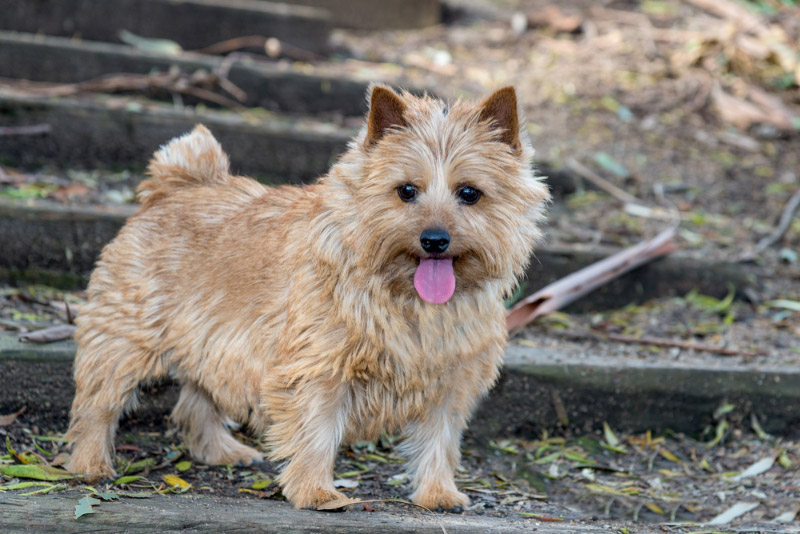
Exercise 🐕
Norwich Terriers are small but energetic dogs that need about an hour of vigorous daily exercise to stay happy and satisfy their innate need to do something. If you can, incorporate as many games as possible with a tasty treat to work out their little brain. You’ll be shocked at how clever they can be. In general, Norwich Terriers are eager to please you and gladly learn any number of tricks if you keep the treats and belly scratches coming.
While active, Norwich Terriers can adapt to apartment life well if you take enough daily walks and invest in games to play during long stints indoors. They need mentally stimulating games, perimeters to patrol, and exciting toys. Snuffle mats can make mealtime more engaging, and you can stuff a Kong with frozen peanut butter to keep them occupied on a lazy afternoon.
Training 🦮
Norwich Terriers are a treat to train as long as you get on the same page with a consistent routine. Short sessions with clear goals and rewards set your dog up for success while building a solid foundation for future commands or tricks. They can be surprisingly acrobatic when they want to be and enjoy small-scale agility courses. Reducing their barking with training is ideal since they love to bark at strangers and other animals.
That’s where socialization comes in. Careful, measured exposure to various people, places, and other animals helps teach your Norwich Terrier how the world works and how to act appropriately in various situations or settings. You should start by taking your dog on their leash to nearby destinations, like the park or a favorite walking trail, where you reward calm, thoughtful behavior and patiently ignore nuisance barking or leash tugging.
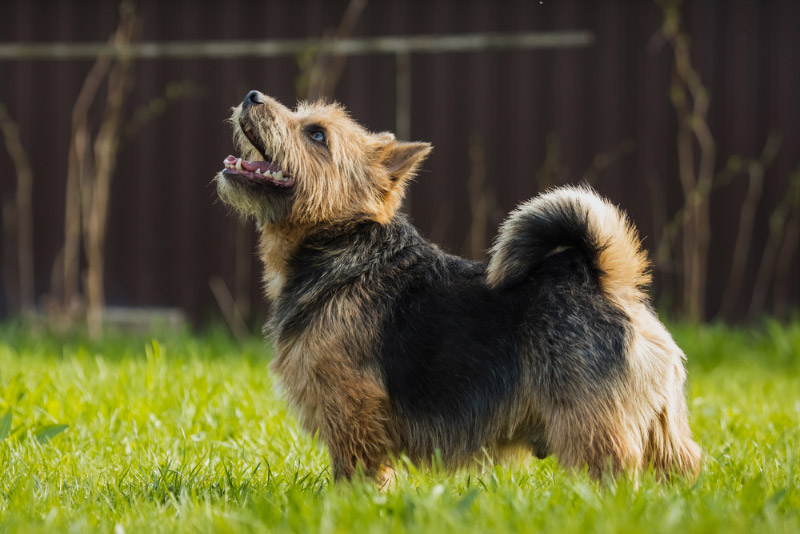
Grooming ✂️
Norwich Terriers are typically groomed with a specialized stripping technique where the longest strands of fur are pulled out, and the coat is worked into a desirable shape. They have a coarse, wiry coat that takes some patience to work with, or you can hire an experienced dog groomer familiar with stripping Norwich Terriers. Along with stripping, you’ll need to keep up with weekly grooming to remove shed fur. Thankfully, their coat is short and not prone to tangling.
Health and Conditions ❤️
When bred properly and screened for the most notable health issues by a good breeder, Norwich Terriers are very healthy dogs that live 12 to 14 years. Like any breed, however, they’re more susceptible to certain conditions and diseases you should know about.
- Luxating patella: Norwich Terriers are known to develop luxating patella, a condition where the knee dislocates, which can require medical intervention to treat long-term.
- Dental problems: Just like 80% of all dogs, Norwich Terriers are susceptible to dental disease as a result of poor dental hygiene. Prevent dental disease later with routine dental care like teeth brushing and cleanings.
- Upper airway syndrome: Also called UAS, Norwich Terriers are more likely to develop this potentially fatal respiratory condition affecting the larynx and lungs.

Male vs. Female
Male Norwich Terriers are just a hair bigger and more solid than females, and males are also notably more difficult to housetrain. Females are generally more docile and affectionate, whereas boys are more social and hyperactive. Even once housetrained, male Norwich are known to mark indoors. That can sometimes be managed with neutering at the appropriate age. However, their temperament is more affected by their health and upbringing than their sex.

3 Little-Known Facts About the Norwich Terrier
1. One of the Rarest Terriers
Norwich Terriers have notoriously small litters of three or fewer puppies, which severely limits their population and availability for would-be owners. Despite conservation efforts, only a few hundred puppies are registered each year.
2. Norwich Terriers Are Natural Vermin Hunters
Like other Terriers, the Norwich was bred for their scrappy, can-do attitude, tenacity, and talent for chasing small creatures. They were mostly owned by working-class hunters who valued their affectionate and playful side at home.
3. Some Are Actually Norfolk Terriers
If you’ve ever seen a Norwich with droopy ears, they were actually a Norfolk Terrier! For most of their history, they were considered the same. It wasn’t until the 1960s and 70s that organizations like the AKC and UKC declared the drop-eared Norfolk a distinct breed from the perky, fox-eared Norwich.
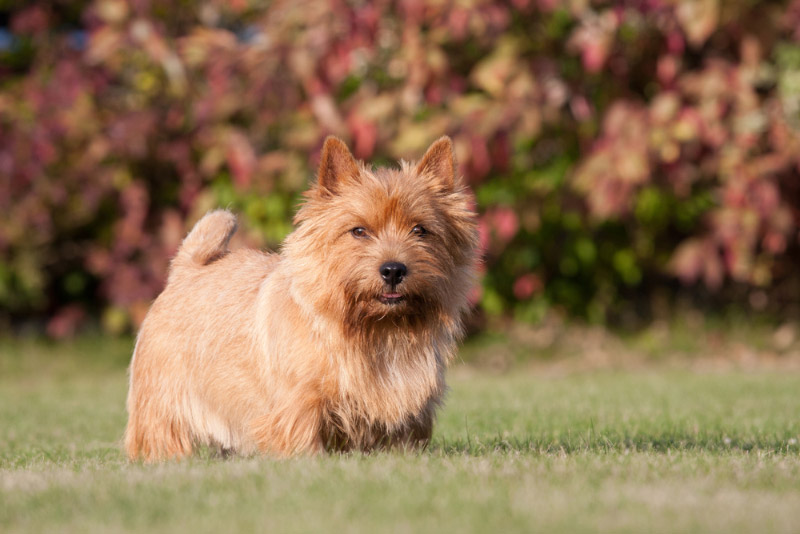

Final Thoughts
Norwich Terriers are fun-sized Terriers with all the big, affectionate hearts of giant dogs and an endearing coarse wire-haired coat. They take a little work to properly groom but are otherwise the ideal family dog whether you have kids, dogs, or even cats. Reducing their excessive barking can be challenging, but they provide years of love, loyalty, and entertainment once they’re trained.
Featured Image Credit: Lenkadan, Shutterstock


